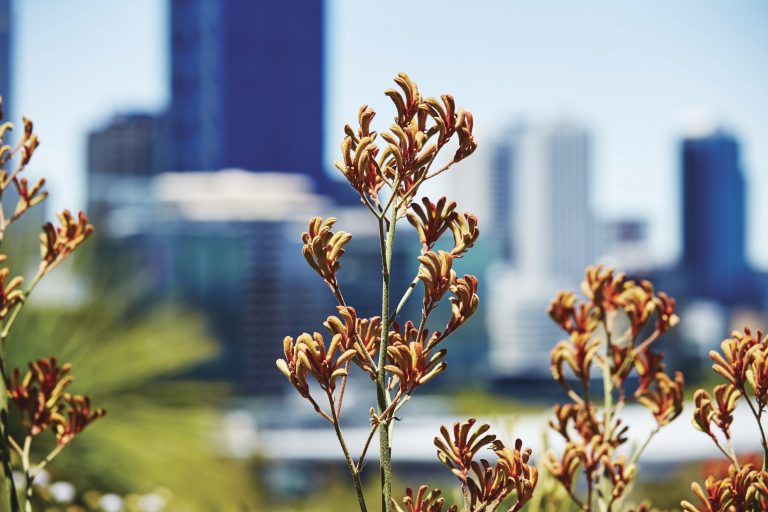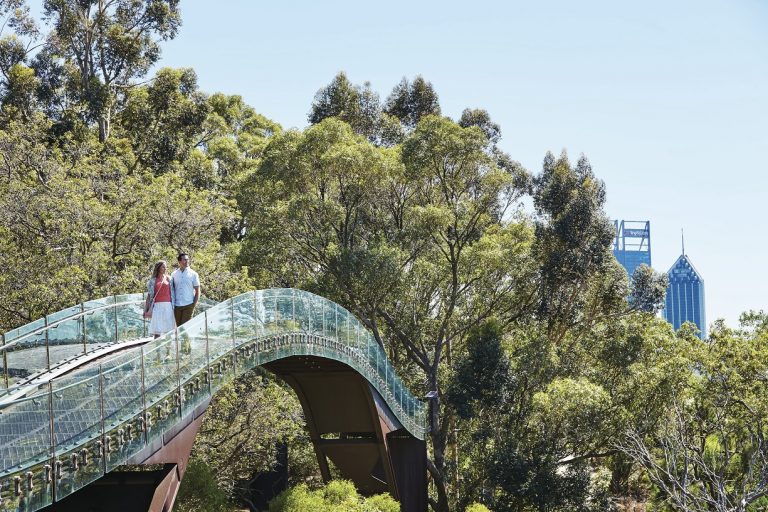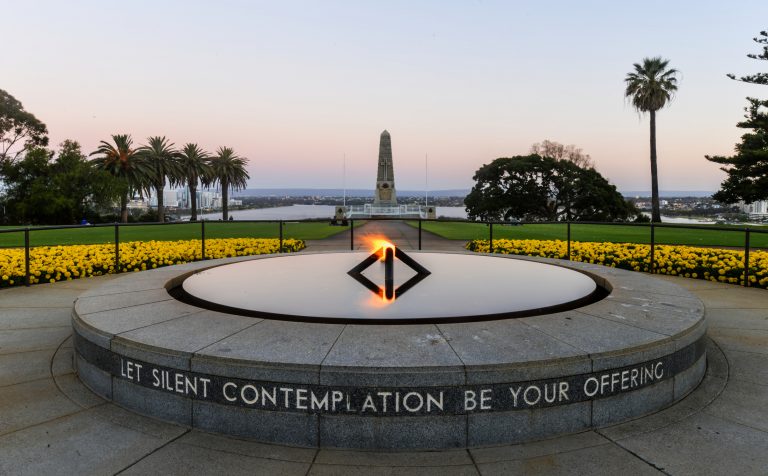

Why Kings Park is the king of all parks

A line of smooth, pale tree trunks stretching their leafy fingers into Perth’s blue sky marks the first of many breathtaking moments you’ll have in Kings Park. No matter how often I go, the largest inner city park in the world dazzles me every time – I can’t help but stare. From horizon-bending views to a 750-year-old boab that travelled 3200 km to be there, free walking tours, Indigenous insights and stretches of native bush only five minutes from the city centre, it’s an oasis that delivers me sweet escapism from everyday life, all forgotten as I wander through its wildflowers.
Ready for a few more? In a “mine’s bigger than yours” play-off, Perth’s huge natural asset trumps that of New York City’s. At 400 hectares, Kings Park is 60 hectares larger than Central Park and for locals, equally as iconic.
Statistically, it’s no slouch either. The Western Australian Botanic Garden, which sits neatly within Kings Park, harbours 3000 species of Western Australia’s native flora. Two-thirds of the rest of the park is untamed scrub, ribboned with sandy or paved trails. As a walker, you get a keen sense of being out bush, alone with nature, when actually you’re in the heart of the city. The thrill of some 80 bird species makes it easy to forget the encircling metropolis. It also has more wartime memorials, statues of historic figures and honour avenues remembering fallen soldiers than any other park in Australia.
On the practical front, Kings Park is a cinch: most public buses leaving from the city centre along St Georges Terrace will take you up the hill for free (just ask the driver). For those with a car, free parking is clustered throughout the park. Once there, free walking tours run by passionate Kings Park Volunteer Guides mean you don’t have to spend a cent to enjoy this green zone. The free walks run for between one and three hours and depart daily at 10am, 12pm and 2pm. You can target what you’re interested in: survivalist plants, exotic trees, bushland trails, historic and cultural monuments, or the diversity of plant species existing within WA’s coastal and inland zones. Entry to the park is also free and while lazy picnics are the best, there are also cafés and a restaurant to keep you sated.
Originally published on justanotherdayinwa.com
- 10 Jul '19



